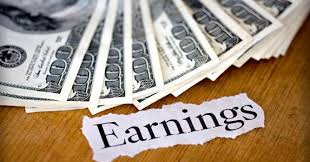As of February 5, there had been 258 members of the S&P 500 report earnings with 242 still to come. So far the earnings have mostly been above estimates and so have the revenue numbers. If we break it down and compare it to previous quarters, we get a better idea of what is going on.
The stats were loaded in a report from Lipper Alpha Insight.
Of the 258 that had reported, 71% had beaten their EPS estimates while 61% had beaten their revenue estimates. In the previous four quarters, an average of 78% of companies beat their EPS estimates and 72% beat their revenue estimates. Over the long term, an average of 64% of companies beat EPS estimates and 60% beat revenue estimates.
The average earnings growth for the fourth quarter is expected to be 15.8%, but it drops down to 13.2% if energy stocks are excluded. Revenue is expected to grow by 5.7%. Looking at historical figures, the EPS and revenue growth rates are above historical averages, but if we look at the first three quarters of 2018, they are below average.
In Q1 2018, the earnings growth rate came in at 25.4% and revenue grew by 8.4%. In Q2, earnings were up 23% while revenue was up 9.5%. In Q3, earnings grew by 26.3% and revenues were up by 8.6%.
The forecast drop sharply for 2019 with Q1 earnings growth expected to show a rate of 0.4%, while quarters two and three are expected to show growth rates of 3.7% and 3.2%. Revenue growth is expected to remain pretty constant with ranges from 4.9% to 5.7% for the four quarters.
The tax overhaul is the most likely culprit for the lagging estimates for 2019. Because of the tax cuts, the EPS growth rates came in high in 2018, now the comparable time frames will have a hard time beating the previous year—at least in 2019.
Sector Results
Looking at the 11 main sectors to see how their members have done compared to estimates, there are three sectors that really stand out for beating EPS estimates. The tech sector has seen 88% of its members beat EPS estimates while 3% have matched and 9% have missed.
The healthcare sector has seen 84% of its group beat EPS estimates while 5% matched and 11% missed. The industrial sector has also seen 84% of its companies come in above estimates, but only 2% have matched and 14% have missed.
The two sectors that have seen the biggest disappointments from results were real estate and utilities. For the real estate sector, only 14% of companies have beaten estimates while 57% have matched and 29% have missed. For the utilities sector, 20% have beat, 40% have matched and 40% have missed.
On the revenue side, you don’t have a “matched” category, so it is either a beat or a miss. The healthcare sector has seen 86% of the companies beat revenue estimates and that is the best of the bunch. The consumer discretionary sector shows 77% of companies beating revenue estimates and the industrial sector shows 74%.
The materials sector has been the most disappointing on the revenue side with only 21% of companies beating estimates. The utilities sector (40%) and the financial sector (45%) were the only other two sectors to see less than 50% of members beating their revenue estimates.
So what does all of this mean? As a whole, companies are going to have a hard time showing earnings growth in 2019. The big corporate tax cuts gave earnings a boost in 2018, and that makes the comps hard to beat. What this will likely do is create a stock pickers market. The companies that are able to show double-digit earnings growth will outperform the rest of the market.
Investor’s Business Daily’s EPS rating system measures earnings growth in recent years and recent quarters. The results are tallied and then a rating from 1 through 99 is assigned with 99 being the best. I can see this tool becoming even more valuable in 2019.
The market has rallied sharply since the low in December, but I think that is more of a result of being so oversold back then and less a result of the earnings results. I have expressed many times that I am cautious about the overall market for 2019 and in the first part of April we will start getting earnings results for the first quarter. These results are going to be compared to the first quarter of 2018 and if investors aren’t prepared, they could be very disappointed.


Recent Comments